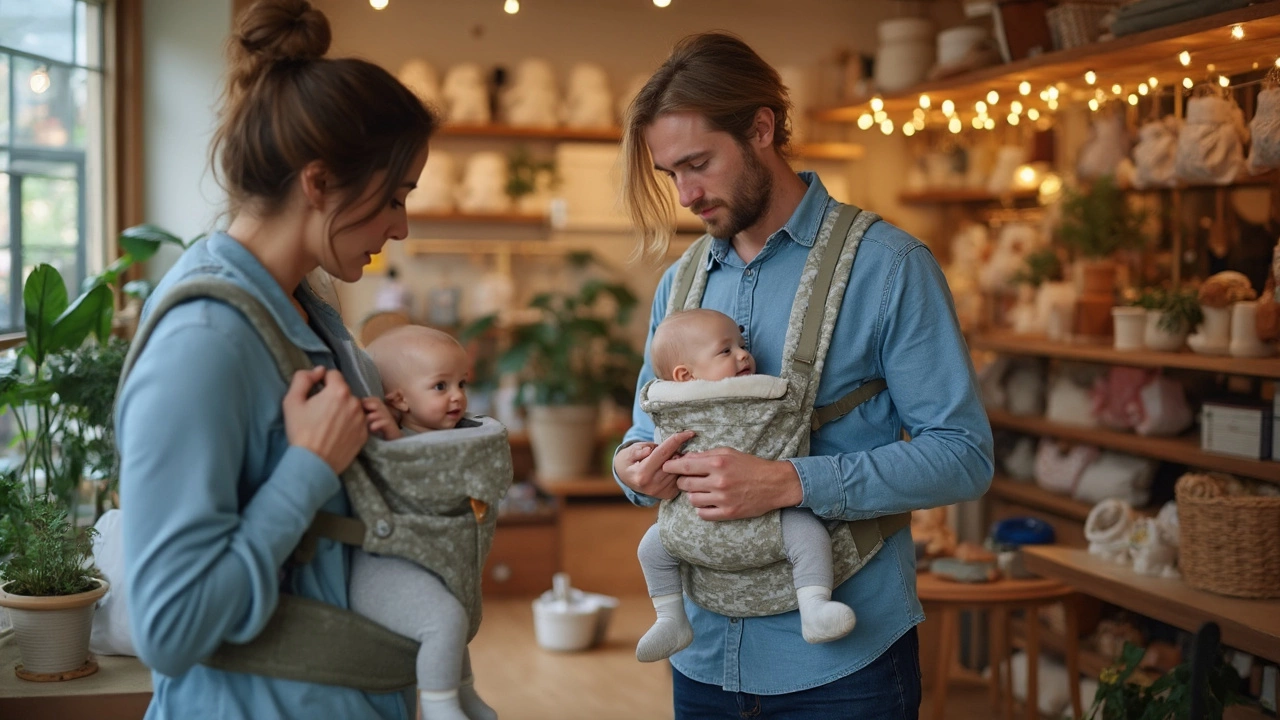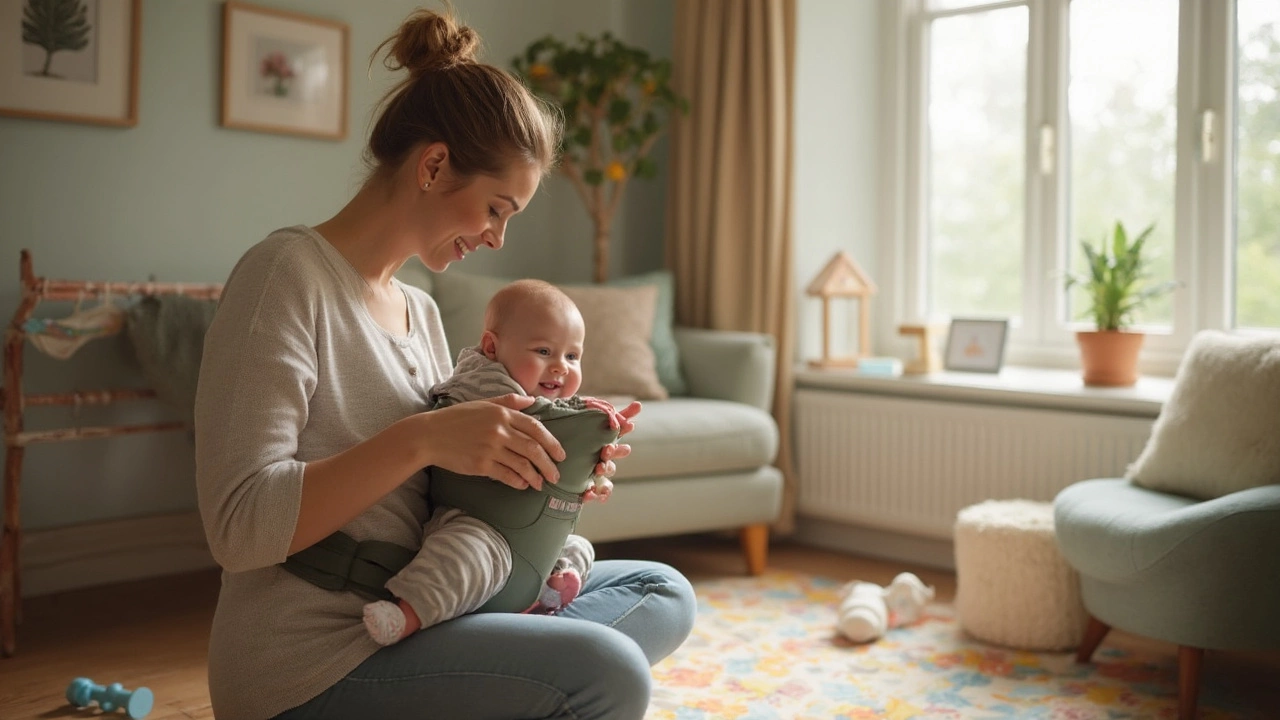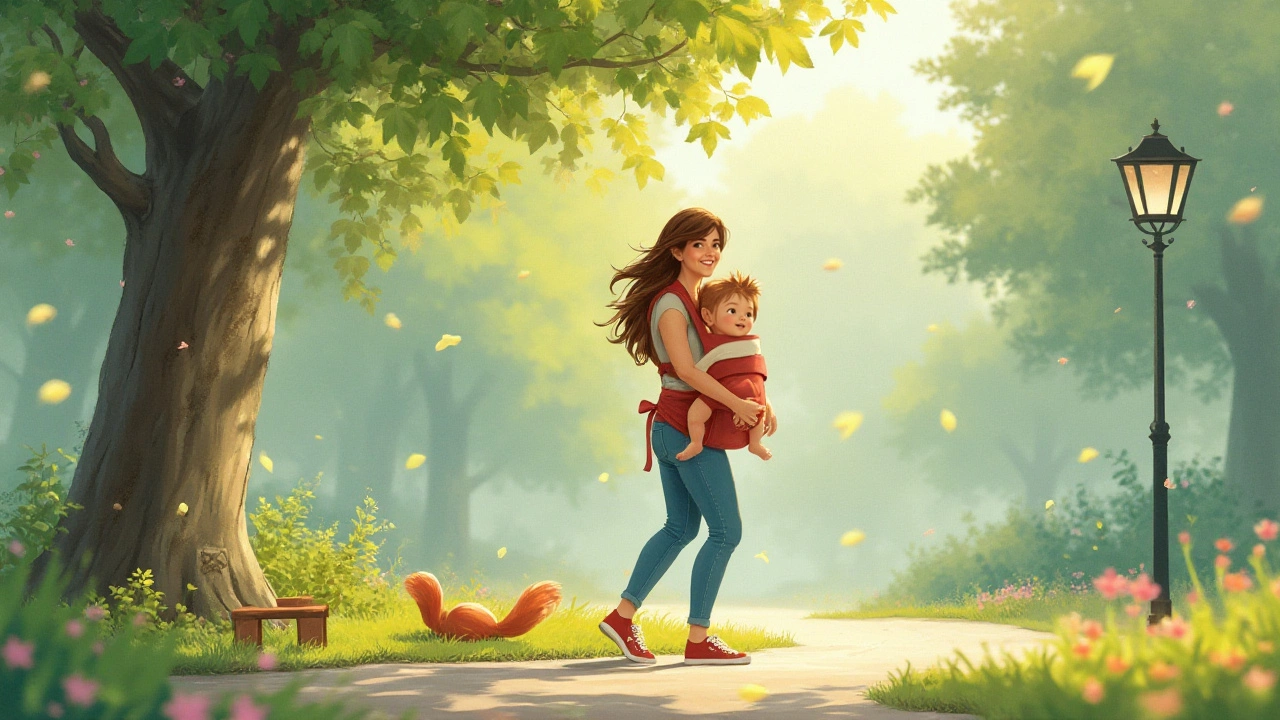What Age Should a Baby Be in a Carrier?

When it comes to baby carriers, figuring out the right age to start can be a bit confusing. But don’t worry, you’re not alone in this! Newborns can actually snooze in a carrier, but it's crucial to choose the right one for their tiny frames. Generally, from day one, soft-structured wraps or slings can give your newborn the cozy ride they need.
Now, if you think about older babies who are packing on the pounds, you might consider switching to something more structured as they grow. Around four to six months, when neck muscles are stronger, structured carriers with more support become a fantastic option. And the great part? Many of these can adjust to your baby’s growing size, taking you through those toddler years!
- Understanding Baby Carrier Age Guidelines
- Different Carrier Types for Different Ages
- Safety Tips for Babywearing
- Choosing the Right Carrier for Your Baby
Understanding Baby Carrier Age Guidelines
Let’s get down to the nitty-gritty of when you can pop your baby into a baby carrier. The good news is, you can actually start using carriers with your little one from birth. However, there are key things to keep in mind for different ages.
For newborns, the goal is to mimic the cozy feeling of the womb. So, a wrap or soft-structured sling is perfect. It provides the necessary head and neck support and keeps your tiny tot tucked nice and safe. The rule of thumb is always about ensuring that your baby’s airway is clear, with no chin-to-chest slumping.
As your baby hits around the 4-6 month mark, they’re often able to hold their head up independently. At this stage, you might start considering more robust options like structured carriers. These are a lifesaver for distributing weight and are fantastic for longer adventures outside.
For babies nearing toddler age, roughly 12 months onwards, their needs change again. A sturdier carrier with hip support becomes essential to keep both you and your little adventurer comfortable.
Here’s a quick guide for reference:
| Age | Recommended Carrier Type |
|---|---|
| 0-4 months | Wrap or Sling |
| 4-12 months | Soft-structured Carrier |
| 12+ months | Toddler Carrier with Hip Support |
Adjustability is key across the board. It’s not just about comfort but also about safety as your baby grows. Make sure the carrier provides the right support at each stage so you can get the most out of your babywearing journey!
Different Carrier Types for Different Ages
Choosing the right baby carrier depends a lot on your baby's age and development. Let’s break it down so you have a clear picture of what works best at each stage.
Newborns: For the smallest members of your family, opt for soft wraps or slings. These carriers are perfect because they mimic the snug and secure feel of the womb. Think stretchy wraps made of soft, breathable fabric that offer flexibility and comfort. They allow for skin-to-skin contact, which is great for bonding.
3 to 6 months: At this age, your baby’s getting a bit more control over their head and neck. You might want to try a baby carrier with a little more structure. Mei Tai carriers, for example, are a fantastic option during this phase as they combine the snug fit of a wrap with the support of a structured carrier.
6 to 12 months: Babies are getting bigger and more curious! Structured carriers, often called soft structured carriers (SSCs), are the way to go. They usually come with padded waistbands and shoulder straps, which take the weight off your back and distribute it evenly. Look for ones that offer both front and back carrying positions.
1 year and beyond: As your kiddo turns into a toddler, you'll appreciate a baby carrier that can handle a bit more weight. Consider backpack-style carriers for longer outings or hikes. These are made for heavier loads, often with added features like hip belts and sunshades.
When picking a carrier, remember that comfort for both you and your baby is key. Also, check for safety certifications and read reviews to ensure you’re getting a high-quality product. Happy babywearing!

Safety Tips for Babywearing
Wearing your little one close is not just convenient but also super comforting. Still, there are some safety things we should keep in mind to keep this bonding time both happy and secure. Finding the right balance of snug but comfortable is key when using any kind of baby carriers.
First off, always make sure you can see your baby’s face. Their chin shouldn’t be pressed against their chest. If you're using a newborn carrier, your baby should be high enough that you can easily kiss the top of their little head. This way, you're in the sweet spot for checking their breathing.
Next, support is crucial. For younger infants, ensure their back is well-supported, and remember, babies don't need their heads bobbing around! As your baby grows, they can handle more upright and outward-facing positions, but until they're around six months or older, it's smart to stick to inward-facing positions for that added support.
Before you start any outdoor adventures, make sure your carrier is in tip-top shape. Regularly check for any wear and tear, especially in the seams and buckles. And don't forget your own comfort; if you're not comfortable, your baby won’t be either. Adjust those straps and settings until it feels like a dream!
Here’s a quick list to keep things safe:
- Check Carrier Settings: Before every use, ensure clips and fasteners are secure.
- Proper Positioning: Baby’s face should be visible with no fabric covering their airway.
- Constant Supervision: Always be aware of your baby’s cues and adjust as needed.
- Dress Accordingly: Remember the carrier adds warmth, so dress the baby lightly to avoid overheating.
In short, every carrier and every baby is a bit different, so take the time to find that perfect fit and keep these safety tips in mind to enjoy the perks of babywearing safely and comfortably.
Choosing the Right Carrier for Your Baby
Picking the perfect carrier for your little one isn't just about style – it’s all about comfort and support for both of you. So, what should you consider? Let’s break it down.
First off, think about your baby’s age and weight. While every carrier has its own specifications, generally, newborn carriers like wraps or slings work best for the tiniest tots. They provide that snug hug and support those delicate necks. As your baby grows, around four to six months, structured carriers are a good move since they offer more support for a curious baby who’s starting to explore the world.
Now, let’s talk types. There are a few popular choices:
- Wraps: These are stretchy and mold around your baby’s body, perfect for newborns but they require a bit of practice to wrap snugly.
- Slings: Simple to use with a single piece of fabric, ideal for quick up-and-downs and usually comfortable for breastfeeding.
- Structured Carriers: These come with straps, buckles, and sometimes rigid panels for extra support, great for older babies and toddlers.
When you're browsing, pay attention to weight limits and adjustability. You want a carrier that grows with your baby, right? Many carriers now come with inserts or adjustments to transition smoothly from infant to toddler stages, saving you the hassle and cost of frequent replacements.
Checking for proper ergonomic design is key – you want to ensure that your baby's hips and legs are supported in the 'M' position to promote healthy development. Remember, spending a little time getting a good fit initially can mean hours of comfy carrying later on.
And before you hit the buy button, consider trying on a few options. Stores often have samples, or maybe borrow from a friend to get a feel for what works best for you.
Ultimately, the best baby carrier is one that fits your lifestyle, your baby's needs, and of course, feels good to wear. Trust your instincts and enjoy those close-up moments with your little one while you still can!

